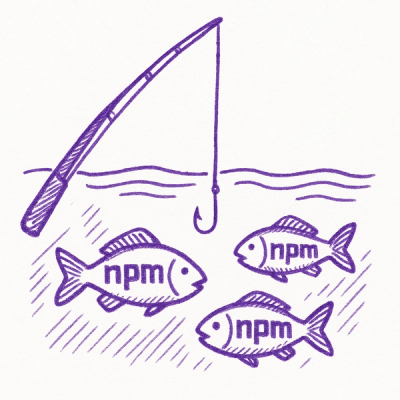

Getting Started
What is GitRows?
GitRows makes it easy to use and store data in GitHub and GitLab repos. You can read data stored in .csv and .json files from all public repos and read, create, update and delete data in public or private repos that you have access to, all with the benefit of version control. GitRows also supports basic .yaml file operations, mainly for reading and writing OpenAPI documents.
GitRows works with node and in any modern browser. Alternatively learn more how to use GitRows' free API to integrate data into your websites/apps.
Installation
As a package for node use npm:
npm i gitrows
You can use GitRows in the browser by including gitrows.js or gitrows.min.js from the ./dist folder or using unpkg:
<script src="https://unpkg.com/gitrows@latest/dist/gitrows.min.js"></script>
Usage
Basic
const Gitrows = require('gitrows');
const gitrows = new Gitrows();
let path = '@github/gitrows/data/iris.json';
gitrows.get(path)
.then( (data) => {
console.log(data);
})
.catch( (error) => {
});
Options
You can configure various options to streamline your workflow with GitRows.
options(object params)
You can use the options() method to set or get the options of the GitRows instance. The available options and their default values are:
{
server: undefined,
ns: 'github',
owner: undefined,
repo: undefined,
branch: 'HEAD',
path: undefined,
user: undefined,
token: undefined,
message: 'GitRows API Post (https://gitrows.com)',
author: { name: 'GitRows', email: 'api@gitrows.com' },
csv: { delimiter: ',' },
type: undefined,
columns: undefined,
strict: false,
default: null
}
Repo related options
The following options are data file repository related and may be overwritten by GitRows while parsing an url or API call:
server used in connection with ns:'gitlab': You can use GitLab installations on other webservers than gitlab by providing its url, e.g. gitlab.example.comns either github or gitlabowner repository ownerrepo repository namebranch select another than HEADpath directory and/or file name with extension
If you want to alter the contents of the data files you need to provide a username and access token for the selected namespace:
user a GitHub or GitLab username (may be omitted for GitLab)token a GitHub or GitLab token
The commits are done with a standard message and authored by GitRows by default. Change if needed. This is useful for different GitRows instances committing to the same repo:
message commit messageauthor an object with the properties name and email to identify the committer
Data format related options
You can set these output options:
csv the option accepts only an object with the property delimiter, others might be added in future versionstype either json or csv - in most cases there is no need to set this as GitRows determines the type by the data file extension and by parsing its content, but might be useful for debugging purposescolumns either determined by the data file entries or set as an Array with the column names - only applied if strict is truestrict if set to true GitRows will enforce the column scheme found in the data file or set by the columns option for all added data entriesdefault the default value used in strict mode for amending entries with missing column data
Working with Data
GitRows implements a full CRUD interface to you data so you can create, read, update, and delete information in your repository data files.
get(path[, object filter, string method = 'fetch' | 'pull')
requires token for private repos only
To read the complete data set from a .json or .csv file you pass the file path to the .get() method, which has the basic structure of
@namespace/owner/repository:branch/directory/file(.json|.csv)
Alternatively you can copy the file url form your browser and pass this instead. Read more about the path structure and how to troubleshoot in the Path section of GitRows' documentation.
const path = '@github/gitrows/data/iris.json';
gitrows.get(path)
.then( (data) => {
console.log(data);
})
.catch( (error) => {
});
The get method accepts as a second argument a filter object which can be used with filtering and aggregation operators. Learn more about the possibilities in the Filters section.
For reading a file from a private repo you must set your username and token (see put() for more details). Please note that its impossible to decide from the returned status code if the file is private on GitHub or not, as it will always be 404 by GitHub's policy.
As a third parameter you can set the mechanism for retrieving data from the repository server. It defaults to fetch which is sufficent for most use cases and avoids rate limit issues. However, as fetch uses the html raw endpoints, e.g. https://https://raw.githubusercontent.com/, this may lead to a caching latency of a few seconds. If your use case requires faster access times, try pull instead which queries the GitHub or GitLab content APIs.
put(path, object data)
requires token
For adding or updating data (and deleting or creating new data files) you must set your username and an OAuth (personal access) token. Unless you feel particularly adventurous you should never do this in a production environment like a website. You can generate a new one in your GitHub Developer Settings:
const options = {
username:"yourUsername",
token:"yourSecretToken"
};
const data = [
{
id:"0003",
title:"A New Title",
content:"Some new content"
},
{
id:"0004",
title:"Another New Title"
}
];
gitrows.options(options);
gitrows.put(path,data)
.then((response)=>{
})
.catch((error)=>{
});
GitRows accepts the data as an Array of Objects if you want to add one ore more entries (rows) or a single Object for appending one entry (row).
To if you want to enforce consistent data structures set options({strict:true}). If true, GitRows will check the columns (keys) used in your datafile and add the missing keys with the default value NULL or any other value you set with options({default:''}). You can also set the columns as an option with options({columns:[]}).
update(path, object data[, object filter])
requires token
To update an entry from data you must provide it's id, which may either be
- the entry's
id property, if the data consists of an Array of Objects, e.g. [{id:'0001', foo:'bar'}]
- the
property name, if the data consists of a single Object
or
a valid filter expession to update more than one entries and an entry of unknown id.
const filter = {id:'0001'};
const data = {
foo: "bar"
}
gitrows.update(path,data,filter)
.then((response)=>{
})
.catch((error)=>{
});
If you use the API style you may also append the id to the path and omit the second argument:
@namespace/owner/repository:branch/directory/file(.json|.csv)/id
replace(path, object data)
requires token
To update a data set that is not representing tabular data but a dictionary, or to swap a complete set, use the replace method
const data = {
foo: "bar"
}
gitrows.replace(path,data)
.then((response)=>{
})
.catch((error)=>{
});
delete(path[, object filter])
requires token
To delete an entry from data you must provide it's id, which may either be
- the entry's
id property, if the data consists of an Array of Objects, e.g. [{id:'0001', foo:'bar'}]
- the
property name, if the data consists of a single Object
or
a valid filter expession to delete more than one entries.
const filter = {id:'0001'};
gitrows.delete(path,filter)
.then((response)=>{
})
.catch((error)=>{
});
If you use the API style you may also append the id to the path and omit the second argument:
@namespace/owner/repository:branch/directory/file(.json|.csv)/id
types(path[, object {'$limit':'number'}])
Returns the columns and their data types which can be one of string, number, integer, array or object. The data types are detetced from the data set values. To speed detection up you can optionally pass a filter argument with the number of rows to be processed. If mixed values are found within a column, the following take precedence: string over number over integer.
const limit = {'$limit':'10'};
gitrows.types(path,limit)
.then((response)=>{
})
.catch((error)=>{
});
Working with Files
create(path[ ,data])
requires token
To create a new data file programmatically you can use the the create() method, which optionally accepts initial data, that will be added upon creation:
let newFilePath = '@github/gitrows/data/another.json';
gitrows.create(newFilePath)
.then((response)=>{
})
.catch((error)=>{
});
drop(path)
requires token
To delete a data file programmatically you can use the the drop() method:
gitrows.drop(path)
.then((response)=>{
})
.catch((error)=>{
});
Path
To select the data file you can either paste the GitHub/GitLab file url from the browser, e.g.
https://github.com/gitrows/data/blob/master/iris.json
or use the GitRows API style:
@namespace/owner/repository:branch/directory/file(.json|.csv|.yaml)
@namespace and :branch are optional and default to github and master, if you want to access a GitLab repository, use the gitlab namespace.
Which notation to use?
Although it's easier for a simple query to just paste the url I strongly encourage the use of the API style. After you have initially set the namespace, owner, repository and/or branch either by calling a method with a path or by setting them with the options() method you can make subsequent calls by just providing directory/file:
./directory/file(.json|.csv|.yaml)
The API style got it's name from its use with the free GitRows API tool which allows you to query all public repos with a consistent api call:
https://api.gitrows.com/@namespace/owner/repository:branch/path/file(.json|.csv|.yaml)
Give it a try with our sample database from the basic use example: https://api.gitrows.com/@github/gitrows/data/iris.json If you are unsure about how a file url is translated into API style, you can use GitRow's Linter and Converter Tool to check and translate repo and API paths respectively.
test(path [ ,constraint])
To check the path (GitRows API or url) and your permissions, GitRows provides a test method. Please note that the admin|push|pull permissions will only be visible if you have provided your token.
let path='@github/gitrows/data/countries.json'
gitrows.test(path)
.then((response)=>{
})
.catch((error)=>{
});
This example would have a response like
{
valid: true,
ns: 'github',
owner: 'gitrows',
repo: 'data',
branch: undefined,
path: 'countries.json',
type: 'json',
resource: undefined,
fragment: false,
private: false,
admin: false,
push: false,
pull: true,
level: 'file',
code: 200,
message: { description: 'OK' }
}
You can add optional constraints, e.g. to validate push access to the file:
gitrows.test(path,{push:true})
.then((response)=>{
})
.catch((error)=>{
});
which yields:
{
valid: false,
ns: 'github',
owner: 'gitrows',
repo: 'data',
branch: undefined,
path: 'countries.json',
type: 'json',
resource: undefined,
fragment: false,
private: false,
admin: false,
push: false,
pull: true,
level: 'file',
code: 400,
message: { description: 'Constraint Violation - push must not be false' }
}
The test method also accepts fragments:
- a repo
@github/gitrows/data
- a directory
@github/gitrows/data/dir
Filters
Filtering results
For simple matching if a value is present (e.g. an id) supply the field name and required value. You can also use a number of operators in the value field for comparison:
not: equals notlt: less thanlte: less than or equalgt: greater thangte: greater than or equal^: starts with, alias: starts:*: contains text, alias: contains:$: ends with, alias: ends:
The string comparison is case insensitive.
gitrows.get(path,{'some_numerical_field':'gt:10'});
You can also supply an array of expressions per field name. All expressions will be handled as logical AND. This is especially useful for selecting ranges:
gitrows.get(path,{'some_numerical_field':['gt:10','lt:20']});
Aggregate Functions
Instead of retrieving data entries you can use aggregate functions that are prefixed with the dollar sign $ and followed by the column name:
'$count':'*' counts the records in the data set'$avg':'columnName' calculates the average of all numeric values in columnName'$sum':'columnName' calculates the sum of all numeric values in columnName'$min':'columnName' returns the smallest of all numeric values in columnName'$max':'columnName' returns the largest of all numeric values in columnName
All filters are applied before the aggregation, so for example to get the average of all values larger than a certain number you can use {value:'lt:number','$avg':value}.
Selecting Results
To specify the returned columns you can use $select with a comma delimited list of the column names you want to retrieve:
gitrows.get(path,{'$select':'col1,col3,col5'});
Sorting Results
You can order the result with $order:'columnName:asc or $order:'columnName:desc respectively and $limit the entries returned:
gitrows.get(path,{'$order':'col1:asc','$limit':'0,5'});
GitRows' $limit behaves like MySQL's equivalent: If you supply one number, this will be maximum number of rows returned starting from the entry at index 0, if you give two comma delimited numbers, the first will be the offset and the second the number of rows.
Contributing to GitRows
To contribute, follow these steps:
- Fork this repository.
- Create a branch:
git checkout -b <branch_name>.
- Make your changes and commit them:
git commit -m '<commit_message>'
- Push to the original branch:
git push origin <project_name>/<location>
- Create the pull request.
Alternatively see the GitHub documentation on creating a pull request.
Contact
You can reach me at nicolas@gitrows.com
License
Copyright © 2020, Nicolas Zimmer.
MIT





